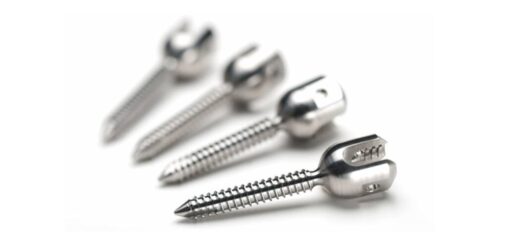Benefits of Physical Therapy for Stress Incontinence
Stress incontinence, a common form of urinary incontinence, affects millions worldwide, causing significant discomfort and embarrassment. If you’re one of the many individuals struggling with stress incontinence, exploring effective treatment options is essential to help you regain control and improve your quality of life. Physical therapy has emerged as a valuable and non-invasive approach to managing stress incontinence. In this article, we will delve into the benefits of physical therapy for stress incontinence, the techniques used, and how it can positively impact individuals dealing with this condition.
Stress incontinence refers to the involuntary leakage of urine during physical activities or movements that put pressure on the bladder, such as sneezing, coughing, laughing, or exercising. This condition predominantly affects women, particularly those who have given birth, experienced menopause, or have weak pelvic floor muscles. Stress incontinence can profoundly impact one’s daily life, leading to social anxiety, reduced physical activity, and diminished well-being.
It is crucial to seek treatment for stress incontinence, as it is not a normal consequence of aging or childbirth. By addressing this condition, individuals can regain control over their bladder and experience an improved quality of life.
Understanding Stress Incontinence
To comprehend how physical therapy can help manage stress incontinence, it’s essential to understand the causes and mechanics behind this condition. Stress incontinence occurs when the pelvic floor muscles, which support the bladder and urethra, become weakened or damaged. These muscles are vital in maintaining urinary control by supporting the bladder and closing off the urethra to prevent urine leakage. When these muscles are weakened, any increase in abdominal pressure, such as coughing or jumping, can cause the urethra to open briefly, leading to leakage.
Benefits of Physical Therapy for Stress Incontinence
Physical therapy offers a promising and conservative approach to managing stress incontinence without resorting to invasive procedures or medications. By focusing on strengthening the pelvic floor muscles and improving bladder control, physical therapy aims to alleviate the symptoms of stress incontinence and enhance overall well-being.
One of the primary benefits of physical therapy is its non-invasive nature. It provides individuals with a safe and natural alternative to more aggressive treatments. Through targeted exercises, techniques, and lifestyle modifications, physical therapy empowers individuals to participate in their recovery actively.
Assessment and Evaluation
The journey typically begins with an initial consultation with a skilled physical therapist when seeking physical therapy for stress incontinence. During this consultation, the therapist will conduct a comprehensive assessment to gather information about the individual’s medical history, symptoms, and lifestyle factors that may contribute to their condition.
A physical examination will also be performed, focusing on the pelvic region and the strength of the pelvic floor muscles. This evaluation helps the therapist identify areas of weakness or dysfunction and tailor a treatment plan to address the individual’s unique needs.
Tailored Treatment Plans
Based on the assessment findings, the physical therapist will develop a customized treatment plan to target the underlying causes of stress incontinence. This plan may include a variety of exercises and techniques aimed at strengthening the pelvic floor muscles, improving bladder control, and promoting overall pelvic health.
Kegel exercises are often a fundamental component of physical therapy for stress incontinence. These exercises involve contracting and relaxing the pelvic floor muscles to improve strength and coordination. The therapist may guide individuals through various variations of Kegel exercises, such as quick contractions, sustained contractions, or incorporating different body positions.
In addition to Kegel exercises, the therapist may employ biofeedback techniques. Biofeedback involves using specialized sensors to monitor muscle activity and provide visual or auditory cues to help individuals gain better awareness and control over their pelvic floor muscles.
Electrical stimulation is another technique that may be utilized in physical therapy for stress incontinence. This technique involves using low-level electrical currents to stimulate the pelvic floor muscles, helping to improve their strength and coordination.
Incorporating Therapeutic Techniques
Physical therapy for stress incontinence goes beyond exercises alone. Therapists often incorporate other therapeutic techniques to complement the strengthening exercises and address any associated factors contributing to the condition.
Manual therapy techniques, such as soft tissue mobilization and gentle stretching, may release tension in the pelvic floor muscles and improve their flexibility. This can help relieve discomfort and promote better muscle function.
Breathing and relaxation exercises are crucial in physical therapy for stress incontinence. Individuals can enhance their overall control over bladder function and reduce urinary urgency by focusing on diaphragmatic breathing and learning to relax the pelvic floor muscles.
Posture and body mechanics education is another valuable component of physical therapy. Therapists can teach individuals how to maintain proper posture and body alignment during daily activities to minimize stress on the pelvic floor muscles and promote optimal bladder function.
Functional training and progressive exercises are incorporated to simulate real-life situations that may trigger stress incontinence. By gradually increasing the intensity and complexity of exercises, individuals can build strength, endurance, and control over their pelvic floor muscles, improving their ability to manage and prevent urine leakage.
Progress Monitoring and Follow-up
Throughout physical therapy, progress monitoring and follow-up are essential. The therapist will track the individual’s symptoms and evaluate their improvements to ensure the
treatment plan is effective. The treatment plan may be adjusted as necessary to address any challenges or maximize results.
Long-term maintenance strategies are also discussed to help individuals sustain their progress and prevent future episodes of stress incontinence. This may include incorporating exercises into daily routines, implementing lifestyle modifications, and adopting healthy bladder habits.
The Role of Physical Therapists
Physical therapists specializing in pelvic health are crucial in supporting individuals with stress incontinence. These professionals possess the expertise and knowledge to assess and address the specific needs of individuals with pelvic floor dysfunction.
In addition to providing hands-on treatment, physical therapists serve as educators, empowering individuals with information about their condition, proper techniques, and strategies for self-care. They often collaborate with other healthcare providers, such as urologists or gynecologists, to ensure a comprehensive and coordinated approach to treatment.
Potential Risks and Considerations
As with any treatment, certain risks and considerations are associated with physical therapy for stress incontinence. Individuals need to adhere to their treatment plan and follow the guidance provided by their physical therapist. Consistency and commitment to the exercises and techniques are crucial for achieving optimal results.
Managing expectations is also important. While physical therapy can yield significant improvements, it may not cure everyone completely. However, even a reduction in symptoms can have a profound positive impact on an individual’s quality of life.
Open and clear communication with the healthcare team is vital throughout treatment. Individuals should feel comfortable discussing concerns or questions and seek guidance when needed.
Success Stories and Testimonials
Physical therapy for stress incontinence has transformed the lives of many individuals, helping them regain control, confidence, and improved their quality of life. Real-life success stories and testimonials showcase the significant positive impact that physical therapy can have.
Individuals have reported restored bladder control, reduced leakage episodes, and increased confidence in social and physical activities. The personalized approach of physical therapy, coupled with the expertise of skilled therapists, has helped individuals overcome the challenges of stress incontinence and reclaim their independence.
Conclusion
Stress incontinence can significantly impact an individual’s daily life and well-being. However, physical therapy offers a non-invasive and effective approach to managing stress incontinence. By targeting the underlying causes, strengthening the pelvic floor muscles, and improving bladder control, physical therapy empowers individuals to regain control over their bladder function and enhance their overall quality of life.
If you’re struggling with stress incontinence, consider consulting a physical therapist specializing in pelvic health. Through tailored treatment plans, therapeutic techniques, and ongoing support, physical therapy can help you overcome the challenges of stress incontinence and achieve long-lasting results.















